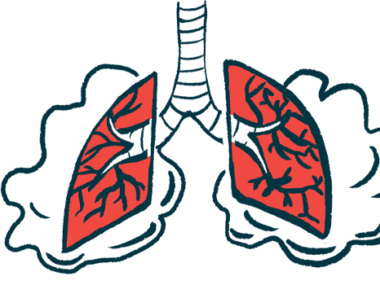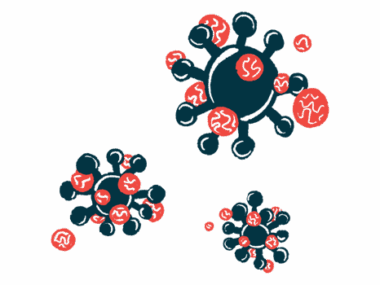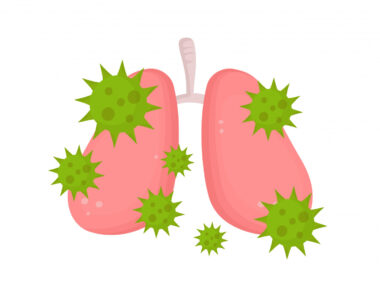Cigarette Smoke Plus Viral Infection Seen to Alter Lung Structure in Mice
Written by |

Infection with rhinovirus, a virus that causes the common cold, combined with long-term exposure to cigarette smoke — two risk factors associated with symptom worsening in people with chronic obstructive pulmonary disease (COPD) — can significantly affect lung structure, a study in a mouse model has found.
The study, “Exacerbation of chronic cigarette-smoke induced lung disease by rhinovirus in mice,” was published in the journal Respiratory Physiology & Neurobiology.
The causes of COPD, a chronic lung disorder, are not completely understood, but the disease is typically associated with exposure to irritants such as cigarette smoke, which irritate and inflame the airways.
In people with emphysema, a severe form of COPD, the walls of the alveoli — the small air sacs in the lungs where gas exchange takes place — become damaged and lose elasticity. This causes the alveoli to rupture, reducing the surface area of the lungs and ultimately lowering the amount of oxygen entering the bloodstream.
COPD patients can also experience exacerbations, or episodes of sudden symptom worsening, triggered by viral infections. Human rhinoviruses (HRV) are the predominant viruses detected during such flares.
“Despite these strong links, our understanding of how HRV contributes to COPD exacerbation is incomplete,” the investigators wrote.
A team of researchers in Australia developed and characterized a mouse model of HRV-induced COPD after lengthy exposure to cigarette smoke to better understand the rhinovirus’ role.
They reasoned that HRV infection after long-term cigarette smoke exposure would lead to more severe symptoms, such as increased inflammation and poorer lung function.
Mice were placed in ventilated chambers and exposed to smoke produced by three Winfield Red cigarettes twice-a-day for five days each week, over a total of 12 weeks. One group of these animals was then infected with a rhinovirus, while another was inoculated with an inactive, harmless form of the virus.
As control groups, the team used mice that had no cigarette smoke exposure but had been infected with HRV, and mice with neither smoke exposure nor HRV infection.
Lung function was determined by measuring the volume of gas in the chest or the thoracic gas volume (TGV), and by airway resistance measured at functional residual capacity (FRC; the volume of air that stays in the lungs after exhaling).
The combination of cigarette smoke and HRV infection had no effect on lung function or on tissue’s ability to expand. However, researchers noted that HRV infection alone did increase airway resistance.
Researchers next estimated total lung volume, volume of lung parenchyma (the section of the lung involved in gas transfer), the volume of alveolar septa (the tissue that separates adjacent alveoli in lung tissue), the surface area of the alveoli, and the number of alveoli.
Cigarette smoke combined with HRV infection increased the total volume of the parenchyma and the volume of air in the parenchyma. The total surface area of the alveoli was also significantly higher in the smoke- and HRV-exposed mice compared with those only exposed to smoke.
“The results of our study show that [HRV] infection after long-term cigarette smoke exposure can significantly impact the respiratory system — particularly with respect to lung structure,” the researchers wrote.
COPD is associated with other characteristics besides impaired lung function, such as cellular inflammation and the production of key mediators. To determine whether their mouse model had similar features, scientists identified and counted immune cells, and evaluated the levels of several cytokines, or chemical messengers, present in lung fluid samples taken from the animals.
Mice exposed to cigarette smoke had a higher number of cells and macrophages in the lungs, as well as lower levels of MIP-2, a protein that attracts neutrophils. Neutrophils and macrophages are immune cells that attack harmful microorganisms and help repair damaged tissue.
Infection with HRV increased both the number of neutrophils and the levels of IP-10, a protein that attracts activated T-cells, a major component of the body’s immune system.
“We acknowledge that our model does not completely mimic COPD in humans in that it does not induce significant functional … changes, however it provides a useful tool for elucidating HRV-induced exacerbations in the context of long-term cigarette smoking,” the researchers wrote.
“Our results show that long-term cigarette smoke exposure and [HRV] infection both individually impact respiratory outcomes and combine to alter aspects of lung structure in a mouse model, thus providing insight into the development of future mechanistic studies and appropriate interventions in human disease,” they concluded.






